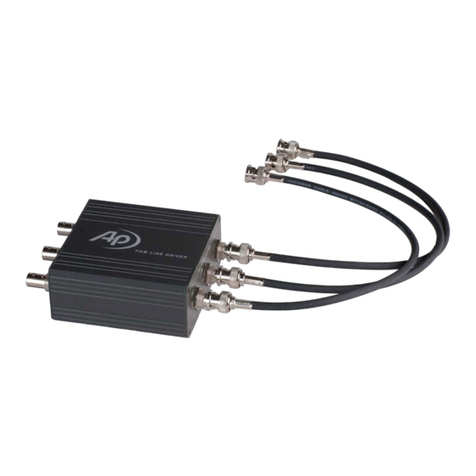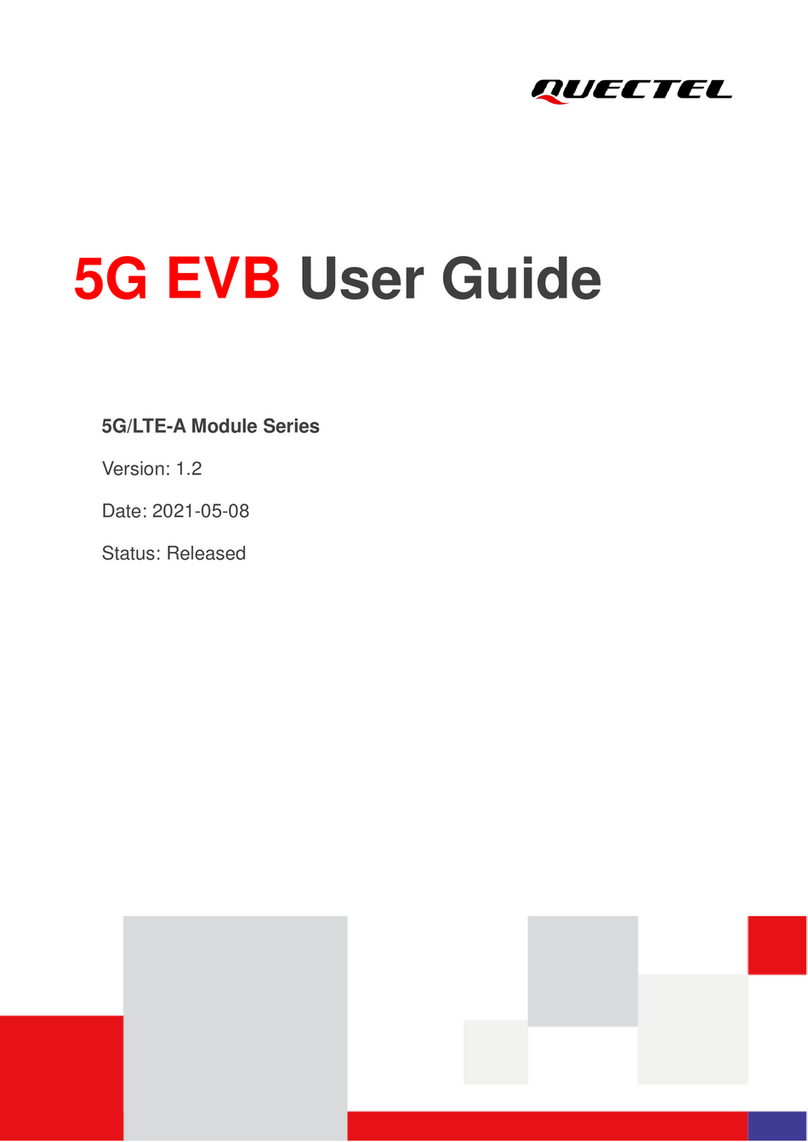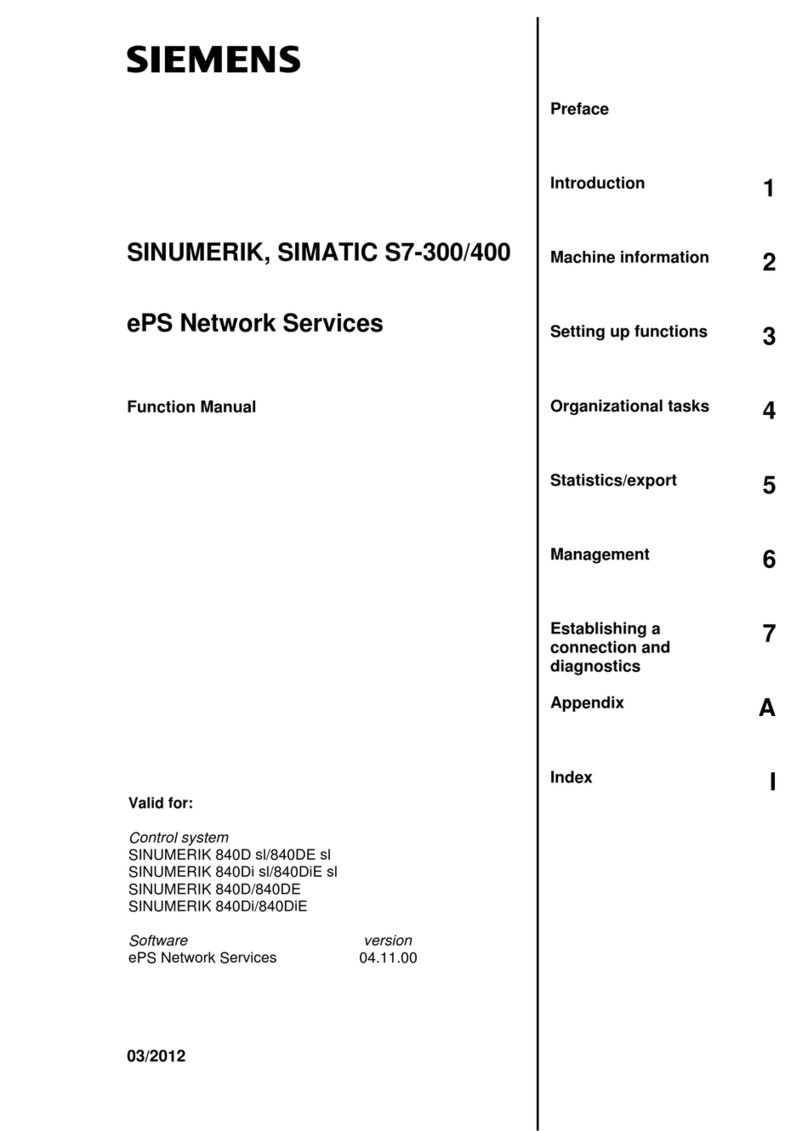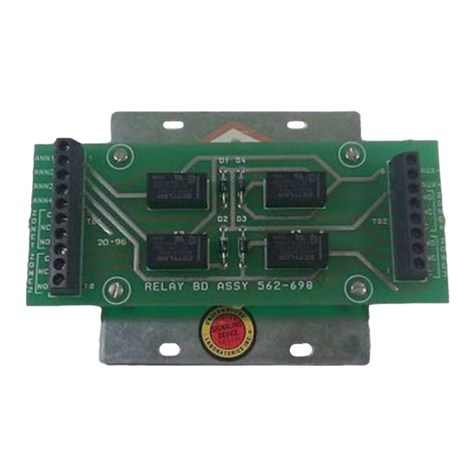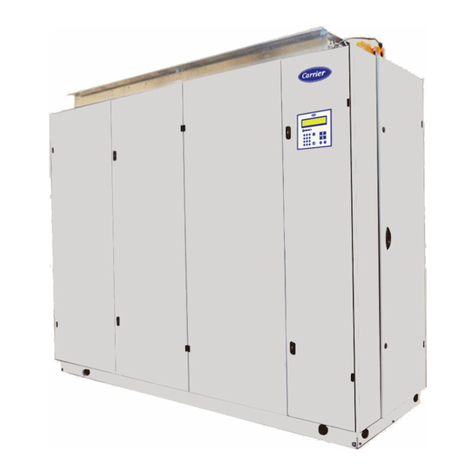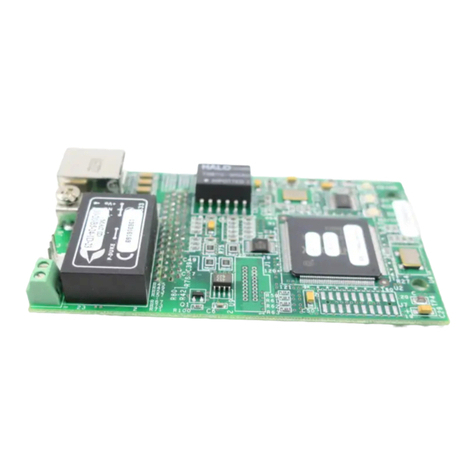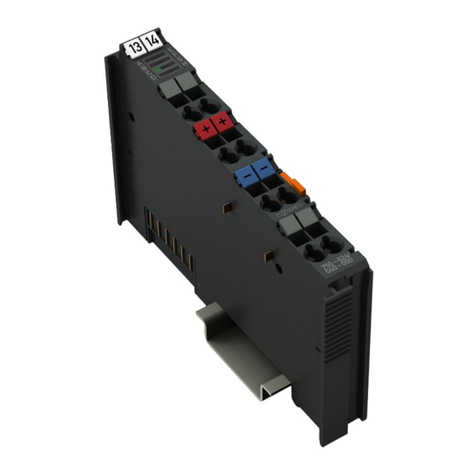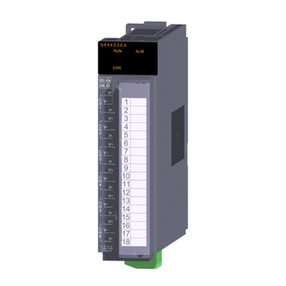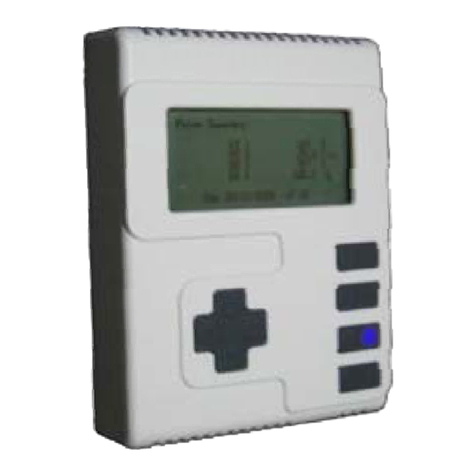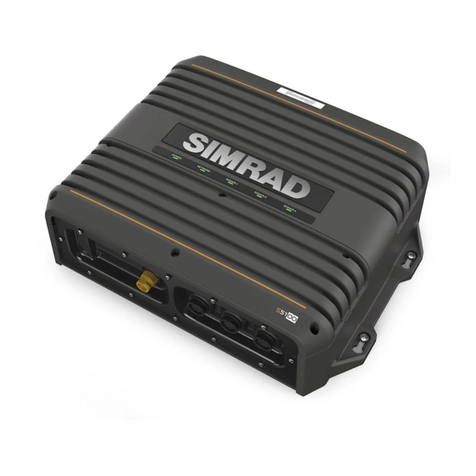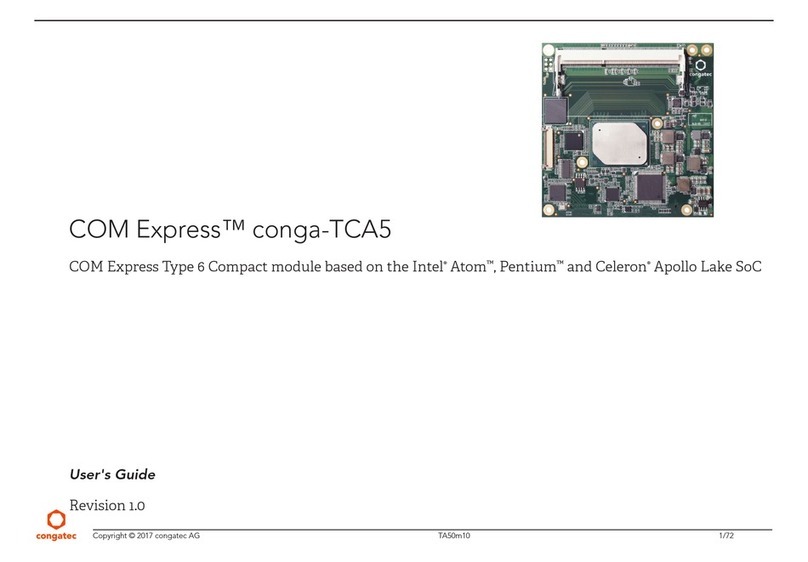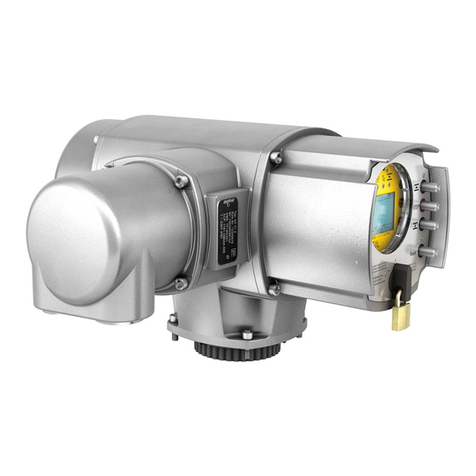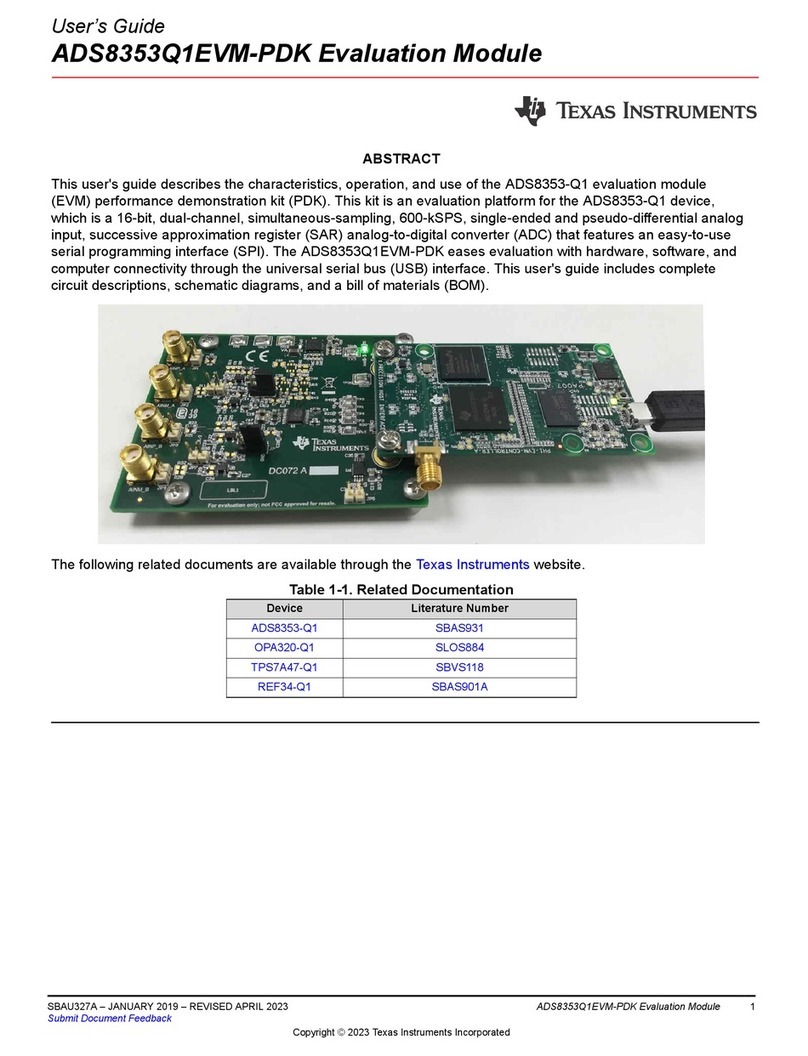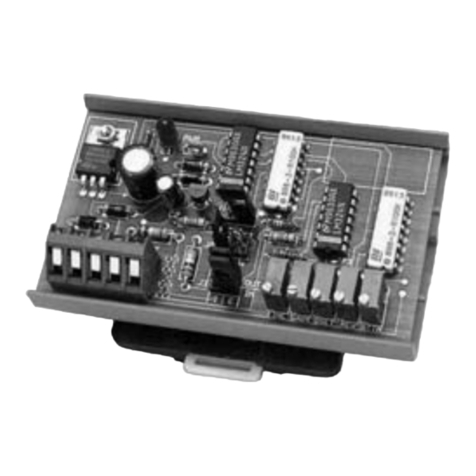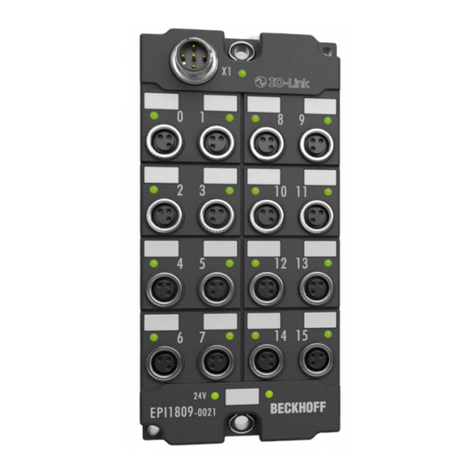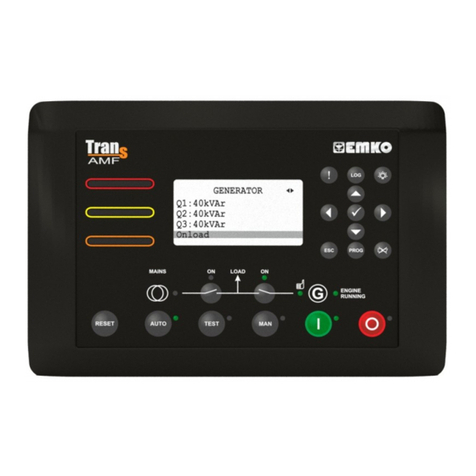Audio Precision DCX-127 User manual

DCX-127
Multifunction Module
User’s Guide
June 2000
Audio Precision PN 8211.0122
Version 1
NOTICE TO EU CUSTOMERS
This product is not updated to comply with RoHS Directive 2011/65/EU and, as of July 22, 2019, will not
be shipped to the European Union (EU). Customers may be able to purchase products from inventory
that were placed on the EU market prior to July 22, 2019 until supplies are depleted. Audio Precision is
committed to assisting with your audio measurement needs. Please contact your local AP sales
representative for further assistance or to determine if alternative product(s) are available.

Audio Precision, Inc.
PO Box 2209
Beaverton, Oregon 97075-2209
U.S. Toll Free: 1-800-231-7350
Tel: (503) 627-0832 Fax: (503) 641-8906
Email: [email protected]
Web: www.audioprecision.com
®
Copyright © 2000-2019 Audio Precision, Inc. All rights reserved.
No part of this manual may be reproduced or transmitted in any form or by any
means, electronic or mechanical, including photocopying, recording, or by any
information storage and retrieval system, without permission in writing from the
publisher
Audio Precision®, System One®, System Two™, System Two Cascade™, System
One + DSP™, System Two + DSP™, Dual Domain®, FASTTEST®, and APWIN™
are trademarks of Audio Precision, Inc.
Windows is a trademark of Microsoft Corporation.
Published by:
Printed in the United States of America
XIX0723122500

CONTENTS
Safety Information ...................v
Safety Symbols .....................vi
Disclaimer........................vi
Description........................1
Scope of This Manual..................1
Introduction ......................1
DC Voltage Measurements ...............2
Resistance Measurements ...............3
DC Voltage Outputs...................5
Digital Input ......................6
Digital Output ......................7
Program Control Outputs ..............8
Auxiliary Output Ports ................10
Installation .......................11
Mounting .......................11
Primary Power Considerations ...........11
Checking or Changing Power Line Voltage ....11
Fuse Information ...................13
Changing Fusing Arrangement ...........14
Power Switch .....................15
Proper Environment .................15
Connecting the APIB Interface............16
Operation ........................17
Panel ..........................17
Volts/Ohms Measurements .............18
DC Output 1 and 2 On/Off..............21
DC Output 1 and 2 Value ..............21
Digital Input and Output ..............22
Program Control, Gate Delay............25
Auxiliary Outputs ..................26
Specifications .....................29
DCX-127 Multifunction Module User’s Guide Page iii

Safety Information
Do NOT service or repair this product unless properly qualified.
Only a qualified technician or an authorized Audio Precision distributor
should perform servicing.
Do NOT defeat the safety ground connection. This product is
designed to operate only from a 50/60 Hz AC power source (250 Vrms
maximum) with an approved three-conductor power cord and safety
grounding. Loss of the protective grounding connection can result in
electrical shock hazard from the accessible conductive surfaces of this
product.
For continued fire hazard protection, fuses should be replaced
ONLY with the exact value and type as indicated on the rear panel and
in Section of this document. The AC voltage selector also must be set
to the same voltage as the nominal power source voltage (100, 120,
230, or 240V rms) with the appropriate fuses installed.
The International Electrotechnical Commission (IEC 1010-1)
requires that measuring circuit terminals used for voltage or current
measurement be marked to indicate their Installation Category. The
Installation Category is defined by IEC 664 and is based on the
amplitude of transient or impulse voltage that can be expected from the
AC power distribution network. This product is classified as
INSTALLATION CATEGORY II, abbreviated “CAT II” on instrument
front panels.
Do NOT substitute parts or make any modifications without the
written approval of Audio Precision. Doing so may create safety
hazards.
This product is for indoor use - pollution degree 2.
Use this equipment only for switching applications as described in
this manual.
Page iv DCX-127 Multifunction Module User’s Guide

Safety Symbols
The following symbols may be marked on the panels or covers of
equipment or modules:
WARNING! - This symbol alerts you to a potentially
hazardous condition, such as the presence of
dangerous voltage that could pose a risk of electrical
shock. Refer to the accompanying Warning Label or
Tag, and exercise extreme caution.
ATTENTION! – This symbol alerts you to important
operating considerations or a potential operating
condition that could damage equipment. Refer to the
User’s Manual or Operator’s Manual for precautionary
instructions.
FUNCTIONAL EARTH TERMINAL – This
symbol marks a terminal that is electrically
connected to a reference point of a measuring
circuit or output and is intended to be earthed for
any functional purpose other than safety.
PROTECTIVE EARTH TERMINAL – This
symbol marks a terminal that is bonded to
conductive parts of the instrument. Confirm that
this terminal is connected to an external
protective earthing system.
Disclaimer
Audio Precision cautions against using their products in a manner
not specified by the manufacturer. To do otherwise may void any
warranties, damage equipment, or pose a safety risk to personnel.
Safety Symbols Safety Information
DCX-127 Multifunction Module User’s Guide Page v

Description
Scope of This Manual
This manual serves several purposes:
§It will help you install the DCX-127 Multifunction Module. In
addition to the instrument capabilities, descriptions of all
connectors are given.
§It presents specifications of the DCX-127.
§It contains some fundamental APWIN assistance relating to the
use of the DCX-127.
Introduction
The DCX-127 Multifunction Module contains an autoranging 4-1/2
digit dc voltmeter-ohmmeter, two 20-bit programmable dc voltage
sources, 21 bits of digital I/O, and three 8-bit programmable auxiliary
output ports for device control or status indicators. Typical applications
include A/D and D/A converter testing, VCA gain control linearity, VCA
distortion, amplifier dc offset and power supply checks, power amplifier
load switching control, loudspeaker voice coil resistance
measurements, temperature measurements, and test fixture control.
The DCX-127 also provides pulses and dc levels whose timing
depend upon key software actions such as end of sweep, analyzer
channel selection, or data settling. These may be used for
synchronization and sequencing of external devices or portions of the
test system such as the triggered sine burst generator.
The DCX-127 functions include:
§DC voltage and resistance measurement from 200 mV to 500 V
and 200 W to 2 MW full scale, fully floating and guarded for
accurate measurements in the presence of large common mode
voltages. Readings can be offset and scaled by the software.
DCX-127 Multifunction Module User’s Guide Page 1

§Resistance measurements using either 4-wire or 2-wire
techniques.
§Two independently programmable bipolar floating DC voltage
outputs, each with a ±10.5 V range, 20 mV resolution and
monotonicity to 40 mV (19 bits). The software can sweep either
dc source.
§Digital input of static or low-speed parallel input, word width up
to 21 bits.
§Digital output of a parallel digital word of 21 bits.
§A simplified 8-bit program control interface that can be defined
to execute any pre-defined keystroke sequence. This can be used
to run different software procedures based upon switch closures.
All the DCX-127 output functions are controlled from APWIN
software, and all of the inputs are displayed in APWIN software and
may be displayed as bargraphs or plotted values during a sweep when
appropriate.
The DCX-127 Multifunction Module is a separate unit packaged in
a one-rack-unit high case that may be rack-mounted or used as a
bench instrument.
The following sections describe the capabilities in greater detail.
Complete specifications can be found at the end of this manual.
DC Voltage Measurements
The DCX-127 includes a 4-1/2 digit autoranging dc voltmeter-
ohmmeter. In voltage mode, the meter will automatically select among
its 200 mV, 2 V, 20 V, 200 V, or 500 V ranges for best resolution of the
measured signal. It may also be fixed on any of its ranges. The meter
has selectable reading rates of 6 or 25 readings per second. The
6/second selection provides full 4-1/2 digital resolution (20,000 counts
full scale). The 25/second selection also displays 4-1/2 digits, but the
last digit will always be either 0 or 5. Normal mode rejection and
common mode rejection also degrade by approximately a factor of
DC Voltage Measurements Description
Page 2 DCX-127 Multifunction Module User’s Guide

four when the 25/second reading rate is selected. Resolution versus
range and reading rate are shown in Table 1.
Resistance Measurements
The resistance mode operates by forcing a calibrated value of
current through the unknown resistance and measuring the consequent
voltage drop. The ohmmeter is autoranging and will select either the
200 W,2kW,20kW, 200 kW,or2MWrange depending on the value
of the unknown resistance being measured. It may also be fixed on any
range. Reading rates of 6 readings per second or 25 readings per
second may be selected. Software features also permit displaying a
computed value which is a function of resistance, using user-entered
values of offset and scale parameters. The DCX-127 input
configuration permits making these resistance measurements on either
a 2-wire or 4-wire basis.
Description Resistance Measurements
DCX-127 Multifunction Module User’s Guide Page 3
Range Resolution
6/s Rate
Resolution
25/s Rate
200 mV 10 uV 50 uV
2 V 100 uV 500 uV
20 V 1 mV 5 mV
200 V 10 mV 50muV
500 V 100 mV 500 mV
Table 1. Reading rate for various ranges

Two-wire connection
If only one pair of test leads is used, connected from the (+) and (-)
terminals of the DCX-127 to the unknown resistance, a 2-wire
measurement results. Current from the internal current source flows
through an internal resistor, through the test leads and resistance being
measured, and through another internal resistor back to the current
source. The two internal resistors are indicated schematically on the
front panel of the DCX-127. Voltage drop across these internal
resistors, produced by this current, is internally measured at the (+)
and (-) terminals. The resistance of the two test leads is thus included in
the measurement. For moderate and high values of unknown
resistance, the additional error introduced by resistance of the test leads
is usually negligible.
Resistance Measurements Description
Page 4 DCX-127 Multifunction Module User’s Guide
Vmeas
Rw
(test lead)
Rw
(test lead)
Rx
(unknown)
Iref
Icomp
+INPUT
-INPUT
600
600
-SOURCE
Figure 1.
Simplified
diagram of
2-wire
ohmmeter
operation

Four-wire (Kelvin) connection
For the highest accuracy when measuring low values of resistance,
we recommend a 4-wire measurement (Kelvin lead connection). For
this measurement, connect one pair of test leads from the two current
source connectors (marked SOURCE) to the unknown resistance.
Connected a second pair of test leads from the voltmeter input
terminals (+ and - jacks) to the unknown. Now current from the
current source does not flow through the voltmeter leads, so the
resistance of the test leads is not included in the measurement.
The resolution of the reading varies with the range and with the
reading rate as shown in Table 1 on page 3.
DC Voltage Outputs
Two independent dc voltage outputs are available at the DCX-127
front panel. Each output may be set with 20 microvolt resolution
(approximately 20 bits equivalent) to any voltage in the ±10.5000 volt
range.
Description DC Voltage Outputs
DCX-127 Multifunction Module User’s Guide Page 5
Vmeas
Rw
(test lead)
Rw
Rw
Rw
(test lead)
Rx
(unknown)
Iref
Icomp
+INPUT
-INPUT
600
600
-SOURCE
Figure 2.
Simplified
diagram of
4-wire
ohmmeter
operation

Example applications of the dc outputs include sweep control of the
gain, offset, or both ports of voltage-controlled amplifiers (VCAs) while
measuring their gain, distortion, or noise and plotting those values
versus control voltage. The dc output can also be used to control the
position of a dc-controlled turntable while measuring polar response
patterns of a loudspeaker or microphone. Manually operated test
equipment with a dc control port (such as the VCF input of a function
generator) may be controlled by the dc outputs. Tape machines with
dc-controllable bias oscillators may be connected, enabling MOL, SOL,
sensitivity, and other data to be taken automatically.
The dc outputs may be floated up to 2 volts away from ground.
See Figure 3 for the equivalent output circuit of both dc outputs.
Maximum current sourced from each is 20 milliamperes. The
maximum current that the DC outputs can sink is 10 milliamperes.
Digital Input
A common application of the digital input is in static (DC) linearity
testing of A/D converters. The digital input may also be used to
interface readings from a BCD-display instrument such as a
capacitance meter to the audio test system.
Digital Input Description
Page 6 DCX-127 Multifunction Module User’s Guide
+
T
-
Vout
Figure 3.
Equivalent
circuit, DC
Outputs 1 or 2

A parallel digital word of up to 21 bits plus sign bit, at
LSTTL-compatible levels, may be connected to the digital input
connector on the front panel of the DCX-127. The value of this word
may be displayed in decimal or hexadecimal representations. A
user-entered scale factor may be entered and a function of actual input
displayed, multiplied by the scale factor. The digital word presented to
the connector may be in either two’s complement (binary plus a sign
bit) or 8-4-2-1 binary coded decimal (BCD) format. The word at the
connector may either be asynchronously sampled at any of four
different selectable reading rates or, in external mode, displayed each
time a “data good” or “conversion completed” pulse is presented at
pin 25. The maximum sampling rate depends largely on computer
speed.
Digital Output
An LSTTL-compatible parallel digital output word of up to 21 bits
plus a sign bit may be created at the digital output connector. The
value of the word may be entered into the software in either decimal or
hexadecimal representations or scaled decimal. The format of the word
(bit-to-pin relationship) may be selected as two’s complement or
8-4-2-1 binary coded decimal (BCD). The strobe line (pin 25) will be
pulsed low each time a new value is entered into the software panel or
stepped to during a sweep.
A typical application of digital output is in static (dc) linearity testing
of digital-to-analog converters. The digital output word drives the
converter; the analog output of the converter is measured with the
DCX-127 DVM. For high-resolution converters at output voltages more
than ±200 mV away from zero, it will be desirable to use one of the
DCX-127 dc outputs in conjunction with the DVM input in differential
voltmeter fashion so that the DVM can be set on its highest resolution
range. Another application of the digital output is control of
digitally-controllable turntables during polar response testing of
microphones and loudspeakers. Still another application is in testing
multiplying digital-to-analog converters (MDACs) used as variable
resistors, attenuators, or in other audio applications. Each bit output
has a five-milliampere current drive capability and 390 ohms output
impedance.
Description Digital Output
DCX-127 Multifunction Module User’s Guide Page 7

Program Control Outputs
The Program Control Output connector provides six pulse or gate
signals controlled by various actions of APWIN software. The pin
assignments are shown in the Table above. All lines are LSTTL
compatible.
The Reset output, pin 2, pulses high when the DCX-127 power is
turned on and whenever a Util Restore menu command is executed.
The Reset output would typically be used to normalize the condition of
external logic devices connected to a System One or System Two test
station at power up. It may also be invoked in a procedure by inserting
a Util Restore command into the procedure.
The Data Acquired output, pin 3, pulses high each time that a set
of data satisfies the settling algorithm. See the Sweep Settling section
for full details on the settling algorithm. This signal could be used, for
example, to cause a compact disc player to automatically advance to
the next track whenever a successful set of measurements is completed
on the preceding track. This is useful during an external frequency or
external amplitude test across a series of tracks of a test disc.
The Trigger output, pin 4, pulses high at the end of each delay
portion of the settling process. In a generator-based sweep, settling
delay is the time after the generator steps to a new value but before the
software starts examining data samples to see if they are settled. This
signal could be viewed on a dual-trace oscilloscope along with the
signal being measured, to verify that the delay has been optimally set
to discard “left over” data from the previous generator step. This is
useful when measuring systems such as 3-head tape recorders or
satellite paths, which have significant time delays.
The Trigger output of the DCX-127 could also be connected to the
trigger/gate input of the generator when the BUR-GEN module is
present. This will synchronize tone bursts in the sine trig mode with the
system’s readiness to make a measurement. The Trigger output could
also be used to strobe an external device being tested, such as an
analog-to-digital converter. This will help insure that the source is stable
before the conversion takes place.
The Sweep Gate output, pin 6, drops low at the beginning of a
sweep test and goes high at the completion of a test. In a nested sweep,
Digital Output Description
Page 8 DCX-127 Multifunction Module User’s Guide

it will go high momentarily at the end of each Source-1 sweep and
drop low again for the next Source-1 sweep after the Source-2
parameter is incremented. One example application of the Sweep Gate
output is in testing of the attack characteristics of compressors, limiters,
and similar audio processors. With the Sweep Gate connected to the
trigger/gate input of the generator when the BUR-GEN module is
present and the Burst-gated mode is selected, time zero on a time
sweep graph and the start of the signal will be synchronized.
The Channel A/B output, pin 7, goes low whenever analog
analyzer input channel A is selected and high whenever input channel
B is selected. The level at this pin thus indicates which channel is being
measured during a stereo sweep.
The Delay Gate output, pin 1, is similar to the Sweep Gate signal
but with the addition of a user-settable delay time between the actual
beginning of a sweep test and the leading edge of the gate output
signal. This delay time is entered at the bottom of the DCX software
panel, in the Gate Delay field.
An example application is power amplifier turn-on and turn-off
transient (“thump”) testing. The amplifier power could be turned on by
the sweep gate and off by the delayed gate. The output of the amplifier
may be measured during a time sweep. To allow correct capture of
transients, the Level meter should be used along with a fixed input
range.
Another example application is to start a tape machine or turntable
for run-up time testing. The basic measurement technique is to perform
a time sweep while measuring frequency from a pre-recorded tape or
disc. Use of the Delayed Sweep Gate to start the recorder or turntable
permits the instrument to draw the graph when (is pressed, start the
time sweep, and then start the machine at a predetermined time into
the sweep when the software is ready to take continuous, rapid
measurements.
Description Digital Output
DCX-127 Multifunction Module User’s Guide Page 9

Auxiliary Output Ports
Three rear-panel 9-pin connectors are provided on the DCX-127
for digital control of external devices. These output ports are intended
for direct interface to LSTTL circuitry, or via LSTTL-compatible drivers
to relays. Control of power, lights, and annunciators are among the
possible applications. The pin connections of these ports are shown
below. The current drive capability of each bit line is five milliamperes;
the output impedance is 390 W.
A fourth auxiliary output, J141, is similar to Ports A, B, and C, but
has a 15-pin connector that also includes +5 V, +15 V, and -15 V
power supplies.
Auxiliary Output Ports Description
Page 10 DCX-127 Multifunction Module User’s Guide

Installation
Mounting
DCX-127 modules may be either rack-mounted or simply stacked
with other instruments. They do not consume appreciable power, and
therefore require no extraordinary ventilation considerations. The
modules occupy one rack unit of height (1.75 inches). They are
provided with bottom feet for tabletop use. The optional rack mount
adapters available from Audio Precision (order number RAK-212)
allow either conventional flush front mounting or setback mounting to
prevent the front connectors from protruding from the rack.
Primary Power Considerations
Checking or Changing Power Line Voltage
The AC Mains input to each instrument is made through a
connector/fuse block/voltage selector assembly. Before connecting the
power cord, confirm that the input voltage selection is correct for your
DCX-127 Multifunction Module User’s Guide Page 11
Fuse Block
Cover
Housing
Indicator Pin
Voltage Selector Card
Figure 4. Changing power line voltage

power source. An indicator pin shows the selected input voltage in one
of the four holes in the cover (see Figure 4).
To change the input voltage, refer to and proceed as follows:
1. Remove the AC power cord from the AC Mains Connector.
2. Open the cover, using a small blade screwdriver or similar tool. Set
aside the cover/fuse block assembly.
3. Pull the voltage selector card straight out of the housing, using the
indicator pin.
4. Orient the selector card so that the desired input voltage is readable
at the bottom (see Figure 5). Then orient the indicator pin to point
up when the desired voltage is readable at the bottom, with the
indicator pin assembly seated in the notch on the board edge.
5. Insert the voltage selector card into the housing with the printed
side of the card facing toward the connector, and the edge
indicating the desired voltage first.
6. Confirm that the correct fuse is installed for the intended input
voltage (refer to fuse ratings marked on the rear panel or in the
manual). If necessary, change the fuse type as described in the
following section.
7. Replace the cover and verify that the indicator pin shows the
desired voltage.
Primary Power Considerations Installation
Page 12 DCX-127 Multifunction Module User’s Guide
100 V 120 V 230 V 240 V
90º 90º 90º
Figure 5. Voltage selector card positions

Fuse Information
The connector/fuse block/voltage selector assembly allows two
fusing arrangements: North American (see Figure 6) and European
(see Figure ). The North American fusing arrangement uses a single
type 3AG (0.25 x 1.25 in.) SB (“slow blow”) fuse; the European fusing
arrangement uses two5x20mmIEC-approved type T fuses. Both
types should be rated 250 V. Fuse current ratings are 200 mA for 100 –
120 V inputs, or 100 mA for 230 – 240 V inputs. Confirm this
information on the label on rear panel.
Installation Fuse Information
DCX-127 Multifunction Module User’s Guide Page 13
Fuse
Fuse block
Cover
Jumper bar
Figure 6. North American fusing arrangement
Fuses
Fuse block
Cover Jumper bar
Figure 7 . European fusing arrangement

Changing Fusing Arrangement
To change from one fusing arrangement to the other: j
1. Remove the AC power cord from the AC Mains Connector.
2. Open the cover of the connector/fuse block/voltage selector
assembly with a small blade screwdriver or similar tool.
3. On the back of the cover, loosen the Philips screw two turns, then
remove the fuse block by sliding up, then away from the screw and
lifting from pedestal at the other end (refer to Figure 8).
4. Invert the fuse holder and reassemble it on the Philips screw and
pedestal, and tighten the screw.
5. Change or add the correct fuses as necessary (again, refer to rear
panel for the correct fuse current rating).
6. Confirm the line voltage setting as described in the previous
section, then replace the cover.
Changing Fusing Arrangement Installation
Page 14 DCX-127 Multifunction Module User’s Guide
Cover
Fuse block
Fuse
Figure 8. Changing fuse types

Power Switch
The DCX-127 POWER switch is a push-on, push-off button located
on the right end of the front panel (see Figure 9). An LED indicator
next to the switch shows when power is applied.
Proper Environment
All Audio Precision products are intended for use indoors, in a
normal environment. Refer to the specifications for temperature range
and humidity specifications.
Connecting the APIB Interface
The DCX-127 has two APIB connectors on its rear panel. They
permit connecting instruments in a “daisy-chain” fashion between the
computer’s APIB card connector and the System One, System Two, or
System Two Cascade APIB connector. The connectors pass the APIB
lines through, and instruments respond only when specifically
addressed, as described below. Normally, the computer will be
connected to the first instrument with a digital interface cable, the first
instrument connects to the second, etc, and the last instrument
Installation Connecting the APIB Interface
DCX-127 Multifunction Module User’s Guide Page 15
Figure 9. DCX-127 Power switch
Table of contents
Other Audio Precision Control Unit manuals
